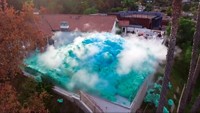Advertisement
Grab your lab coat. Let's get started
Welcome!
Welcome!
Create an account below to get 6 C&EN articles per month, receive newsletters and more - all free.
It seems this is your first time logging in online. Please enter the following information to continue.
As an ACS member you automatically get access to this site. All we need is few more details to create your reading experience.
Not you? Sign in with a different account.
Not you? Sign in with a different account.
ERROR 1
ERROR 1
ERROR 2
ERROR 2
ERROR 2
ERROR 2
ERROR 2
Password and Confirm password must match.
If you have an ACS member number, please enter it here so we can link this account to your membership. (optional)
ERROR 2
ACS values your privacy. By submitting your information, you are gaining access to C&EN and subscribing to our weekly newsletter. We use the information you provide to make your reading experience better, and we will never sell your data to third party members.
Consumer Products
Newscripts
Dinnertime mystery and a dishwasher pod matchup
by Kerri Jansen
March 6, 2022
| A version of this story appeared in
Volume 100, Issue 9
Orange you glad it wasn’t CO
Shortly before 7 p.m. on a Monday evening, this hungry Newscriptster set a pot of rice and water on the stove, clicked on the gas burner, and spotted something concerning. Rather than producing the expected blue flames, the stove burned orange. User manuals warn that orange flames from a gas stove mean incomplete combustion, which can cause a dangerous buildup of carbon monoxide. So the flame was promptly extinguished, a window opened, and all-knowing Google consulted for advice.
“Check if the burner needs cleaning,” Google suggested. It did not. “Check if anything is clogging the fuel supply line.” There was not. “Turn off the humidifier.” Wait, what?
An ultrasonic humidifier had recently been installed after a string of dry winter days had this Newscriptster feeling at risk of collapsing into a pile of dust and fingernails. The new gadget, filled with tap water, had been running for about 8 h by the time the pot of rice hit the stove. This seemed significant. But internet commenters were split on how exactly the humidifier was affecting the stove’s flame: Was increased atmospheric water responsible for the color shift, or was the orange color caused by stray minerals forced into the air by the device?
“When you see orange as a chemist in something hot, your mind immediately goes to sodium,” says Mark Jones, a Dow Chemical retiree who offered to help tease out the mystery. Indeed, sodium is present in tap water and produces a distinctive tangerine shade when burned. Calcium, another tap-water mineral, also produces an orange-hued flame. But Jones wasn’t convinced that the concentration of minerals in tap water is high enough to cause this effect. Instead, he suggested that water droplets in the atmosphere could be cooling the flame as they evaporate. And water vapor could displace oxygen, thereby reducing combustion and producing an orange flame.
Definitive research on this subject is tragically lacking. After all, as Jones notes, “Who would pay you to do this?” But a simple test would confirm whether the minerals were a factor. If water droplets alone were responsible, then replacing the tap water in the humidifier with distilled water would result in the same orange flames. The kitchen was vented and re-humidified with distilled water. The flames returned to their usual blue hue.
“I am certainly surprised,” Jones says, citing a 1995 fire extinguishment study and experiments with his own tap water. He agrees that the results exonerated atmospheric water droplets, leaving sodium and calcium as the likely culprits. He suggested a final experiment: adding a pinch of sodium chloride to the distilled water in the humidifier’s reservoir (something Jones warns against doing with other salts). The effect was striking: within moments, the burner’s flames turned bright orange.
Cascade of queries
Minerals also get the blame for a poorly performing dishwasher that leaves dishes spotty and scaled. Washington, DC, tap water carries moderately high levels of calcium and magnesium, which are known to interfere with detergents’ cleaning abilities.
A colleague and longtime user of Cascade-brand dishwasher detergent packs recommended switching from the mid-level Complete variety to the fancier (and pricier) Platinum version. The pods contain both dry and wet ingredients, encased in and separated by a water-soluble film. The Platinum variety promises “50% more cleaning power” and bears a mysterious purple liquid that is lacking from Complete. In home tests, Platinum performed better, not only effectively cleaning dishes but also washing away grimy buildup inside the dishwasher. But the two products’ ingredients are virtually identical. So what was responsible for the boost in performance? A query to Cascade’s manufacturer, Procter & Gamble, went unanswered.
Inspecting, dissecting, and dissolving the pods showed no clear differences. Small print on the packaging revealed one clue: Platinum’s claimed boost in “cleaning power” actually refers to “% cleaning ingredients vs.” its sibling. The Platinum pod is about 1 g heavier than Complete but has the same weight of dry material, suggesting the added heft comes from a higher quantity of liquid components. Perhaps it’s not a special ingredient but merely an extra dose of the same liquid cleaners that gives Platinum its edge. Or maybe the dishwasher just likes purple.
Please send comments and suggestions to newscripts@acs.org.




Join the conversation
Contact the reporter
Submit a Letter to the Editor for publication
Engage with us on Twitter